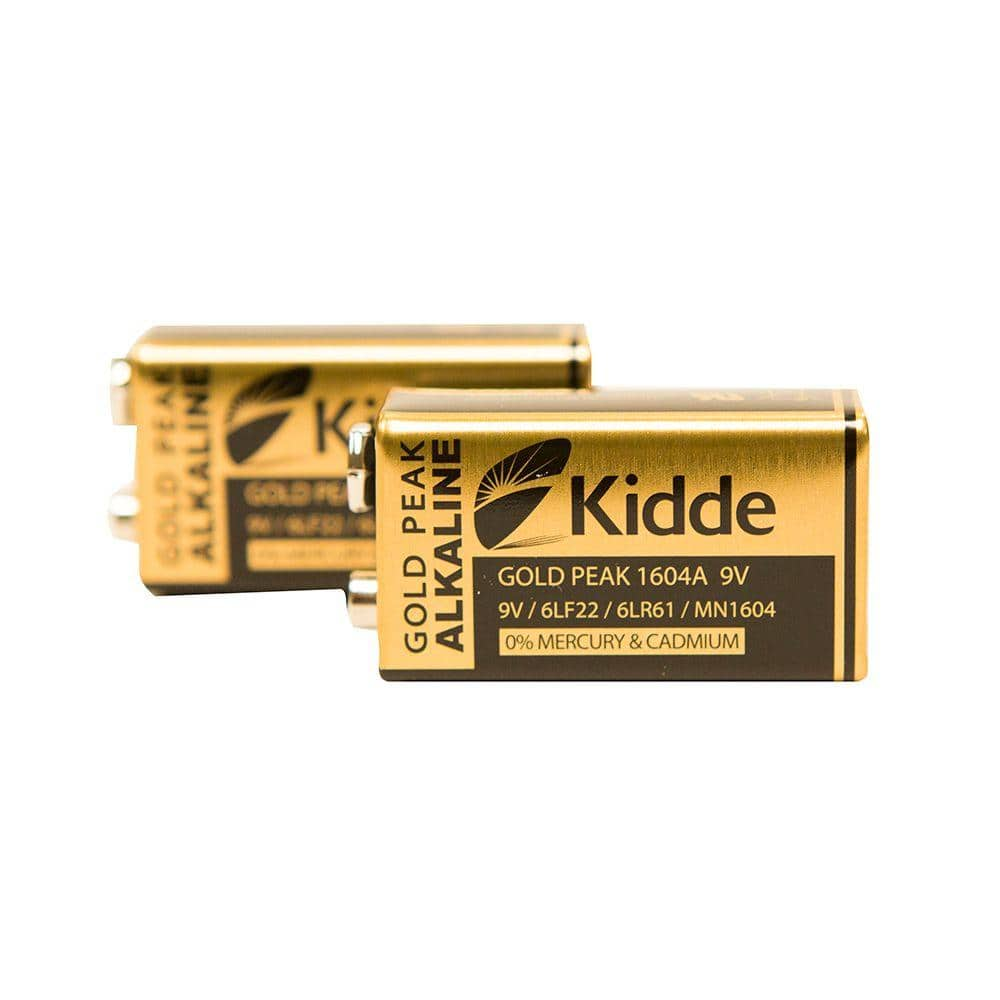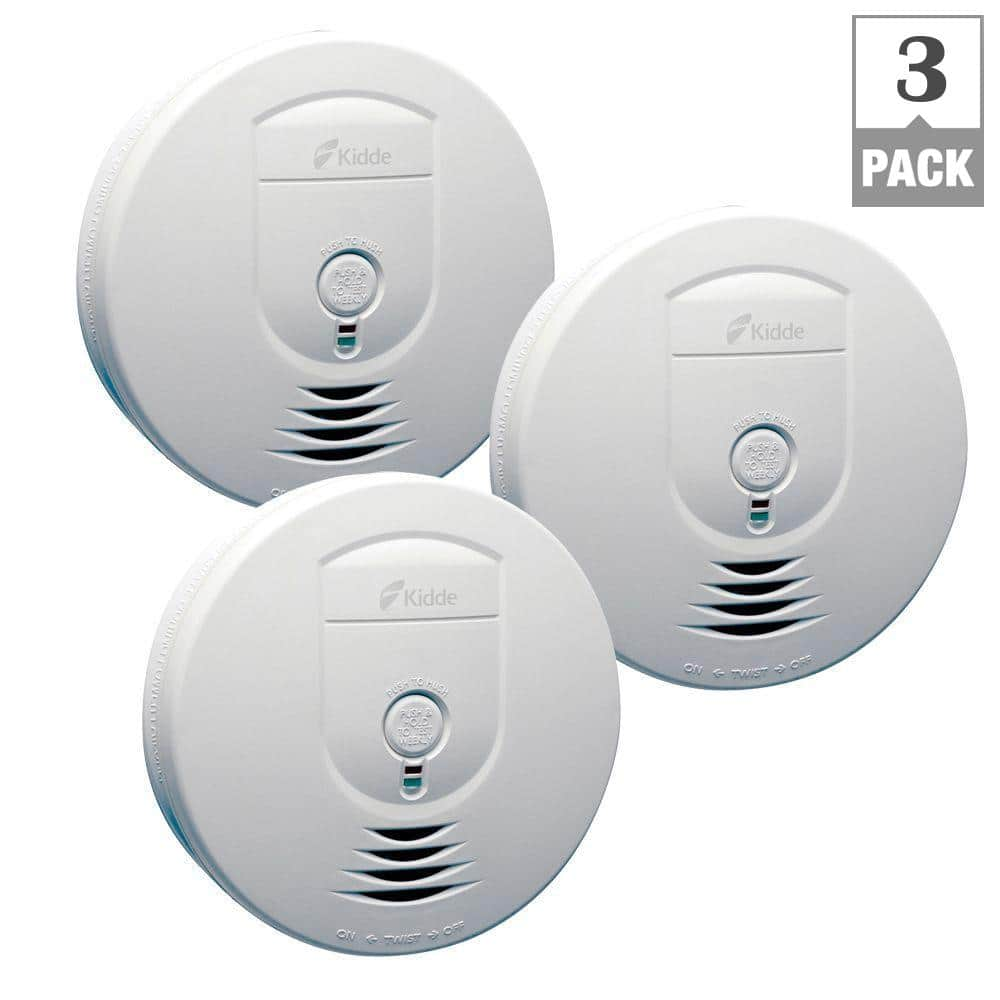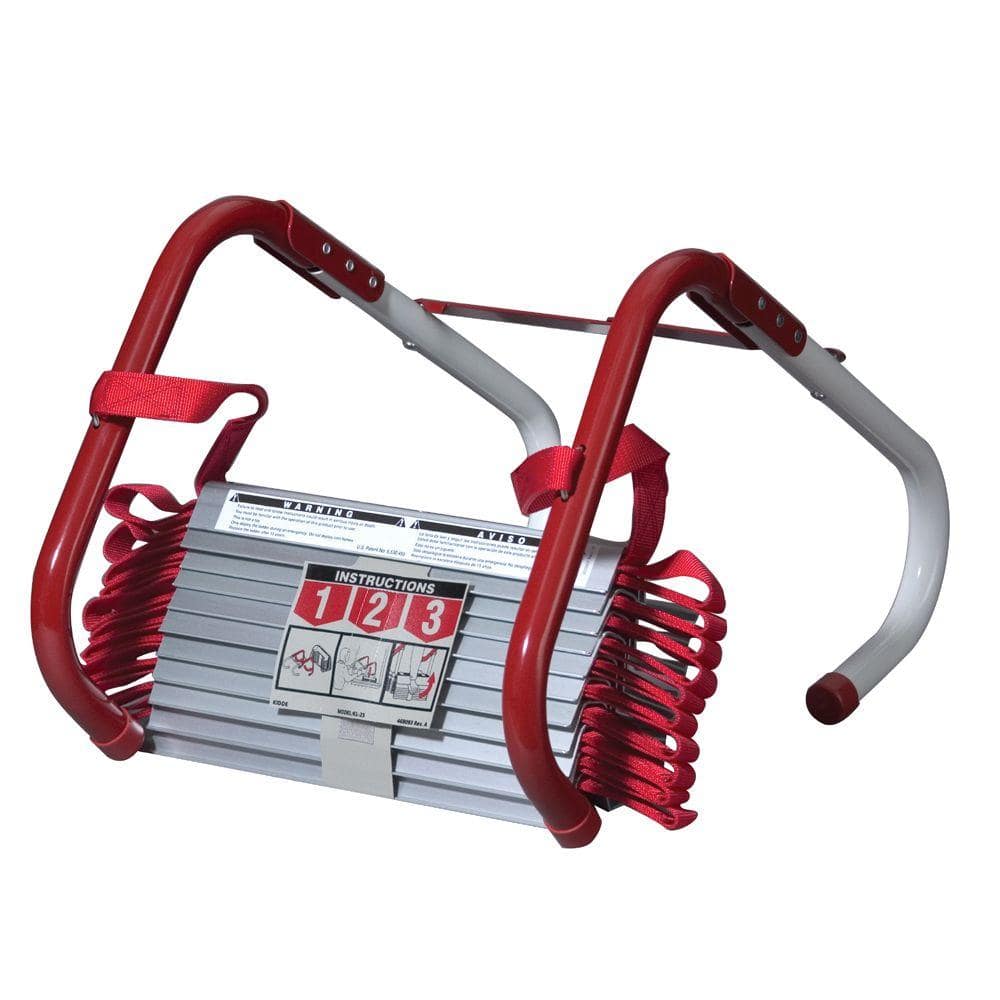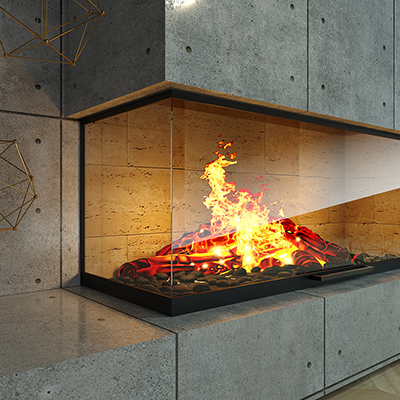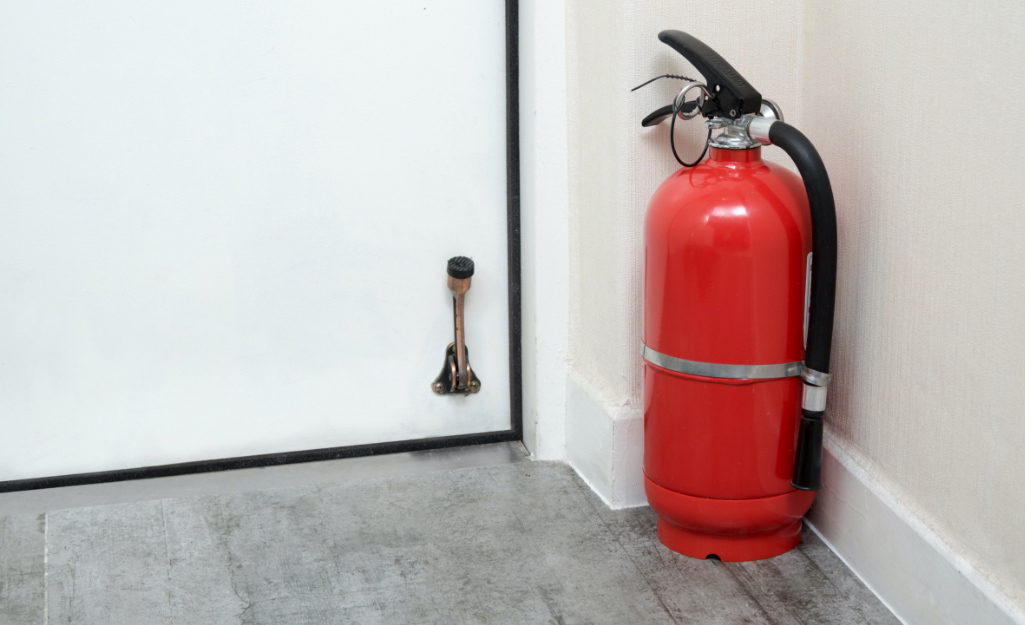Home Fire Safety Equipment

Last updated September 7, 2023
Fire can strike anywhere, anytime, and can start in a variety of ways, including faulty electrical wiring, cooking mishaps, dryer vent ignition, portable heater tip-overs and more. Wherever there is a heat source or an open flame, you should be cautious and consider home fire safety options. Fire safety equipment such as fire extinguishers, smoke detectors and carbon monoxide detectors, are essential must-have products for any home. This guide explains the different types of fire safety equipment and teaches you how and when to use them, plus other important fire safety tips for protecting your family and home.
Safety: Call 911 before attempting to extinguish a fire yourself.
Table of Contents
Fire Extinguishers
Smoke Alarms
Carbon Monoxide Alarms
Fireplace & Smoking Safety
Fire Extinguishers
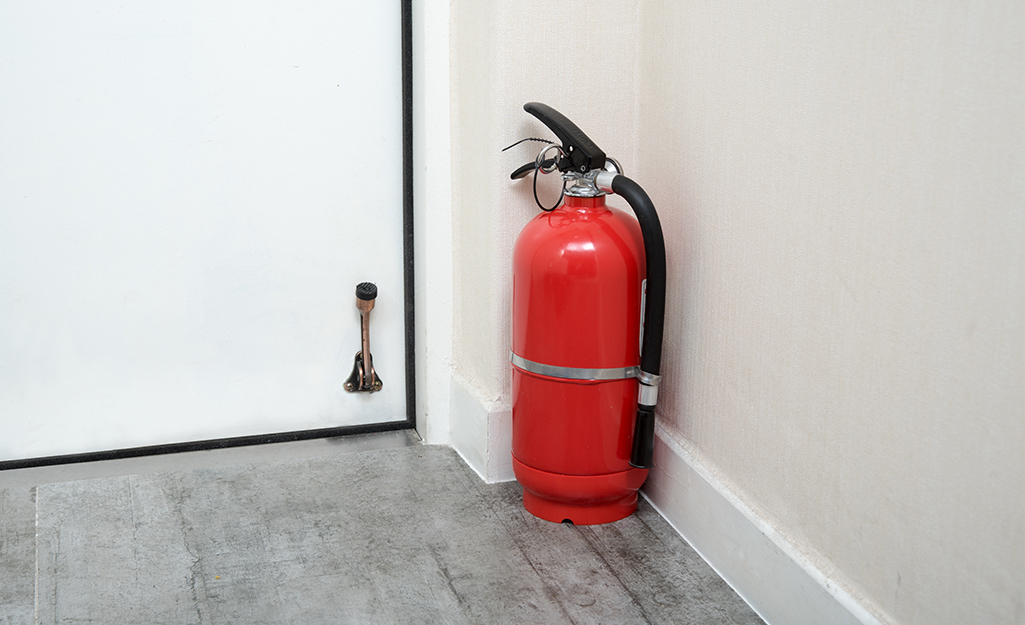
Although commonly on hand in commercial settings, fire extinguishers are often overlooked as an important piece of home fire safety equipment. Not only should you have a fire extinguisher in your home, but in some states, you are legally required to own a fire extinguisher. A fire extinguisher can be lifesaving when water cannot put out a fire, as is the case with most kitchen fires. However, it’s important to know which type of fire extinguisher you need in your home and how to use it.
Types of Fire Extinguishers
Fire extinguishers are classified by ratings of A, B, C and D. These ratings determine the size and type of fire that the extinguisher can put out.
- Class A extinguishers are rated for fires that involve ordinary household items such as wood, cloth, paper, rubber and plastics. The numerical rating on class A extinguishers represents the capacity in terms of an equivalent volume of water. Class 1-A extinguishers have the equivalent of 1.25 gallons of water and a 4-A has the equivalent of 5-gallons.
- Class B extinguishers are rated for fires involving flammable liquids such as kitchen grease, gasoline, oil, solvents and oil-based paint. Class B extinguishers are numerically rated on the number of square feet of fire they can put out. A 10-B extinguisher can cover 10-square-feet of fire.
- Class C extinguishers are rated for fires involving energized electrical equipment, such as wiring, circuit breakers, machinery, electronics and appliances. This class does not have a numerical rating.
- Class D extinguishers are rated for fires involving combustible metals, such as aluminum, titanium, magnesium, lithium and others. This class does not have a numerical rating. Due to their severe nature, class D fires are best handled by professional firefighters.
- Some fire extinguishers are multi-purpose and have two or more ratings, such as A-B or A-B-C. Generally, multi-purpose fire extinguishers are the best types of fire extinguishers for the home.
- While larger fire extinguishers with high numerical ratings can extinguish a wide area, they are also bigger and heavier. Choose a fire extinguisher that you can confidently operate.
Operation
The first rule in proper fire extinguisher use is making sure your extinguisher is accessible. Beyond that, there is a simple acronym that comes in handy to teach you how to properly use a fire extinguisher: PASS.
- P stands for pull the pin.
- A stands for aim the nozzle toward the base of the fire.
- S stands for squeeze the lever slowly.
- S stands for sweep the nozzle from side-to-side, while moving toward the fire.
Maintenance
To properly maintain your fire extinguisher, check the gauge monthly to make sure it is pressurized. The gauge should appear somewhere in the green zone, which signifies it is ready for use. Make sure the pull pin is secured and that there are no cracks, dents or rust spots present on the canister. Replace fire extinguishers that are older than 12-years.
Storage
Since many home fires originate in the kitchen, experts recommend mounting the fire extinguisher on a wall in the kitchen or on a wall just outside the kitchen door. The extinguisher should be easy to access, but not so close to the origin of a fire that you would endanger yourself trying to get to it. For this reason, the extinguisher should be stored at least 30-feet away from the oven/stovetop.
Safety: Never rely solely on a fire extinguisher. This tool should be just one part of your home fire safety plan, alongside smoke alarms and an emergency evacuation plan.
Smoke Alarms
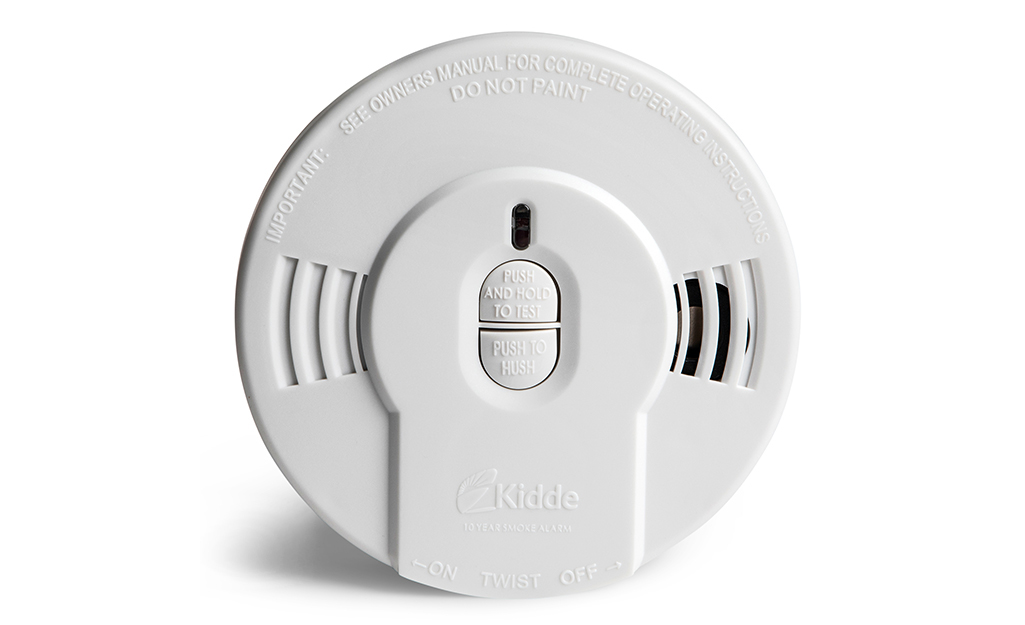
There are two basic types of smoke alarms (also known as smoke detectors): ionization and photoelectric. Both types are effective in detecting smoke and fire, but the best smoke alarms feature both technologies.
- Ionization smoke alarms are better at detecting small particles that are produced in greater amounts in flaming fires, which quickly consume combustible materials and spread in many directions.
- Photoelectric smoke alarms are better at detecting large particles that are produced in greater amounts in smoldering fires, which may smolder for hours before bursting into flame.
Technology
The inclusion of lithium ion batteries enables smoke alarms to last up to 10-years without needing a battery change. Because of this advancement, these smoke alarm batteries can be sealed and are considered "worry-free." At the end of the 10-year period, simply discard and install a new model for another 10-year period of worry-free monitoring.
Alternatively, you can choose a hardwired smoke alarm, which are now standard in new construction homes. These smoke alarms are connected directly to your house’s circuitry, so they do not require a battery. However, many have a battery back-up in case of a power outage.
Placement
Most fire fatalities occur between the hours of 2 a.m. and 6 a.m., when most people are asleep. That’s precisely why it’s so important to have several working smoke alarms in your home. Smoke alarms should be placed in each bedroom, in the kitchen and on every level of your home.
Carbon Monoxide Alarms
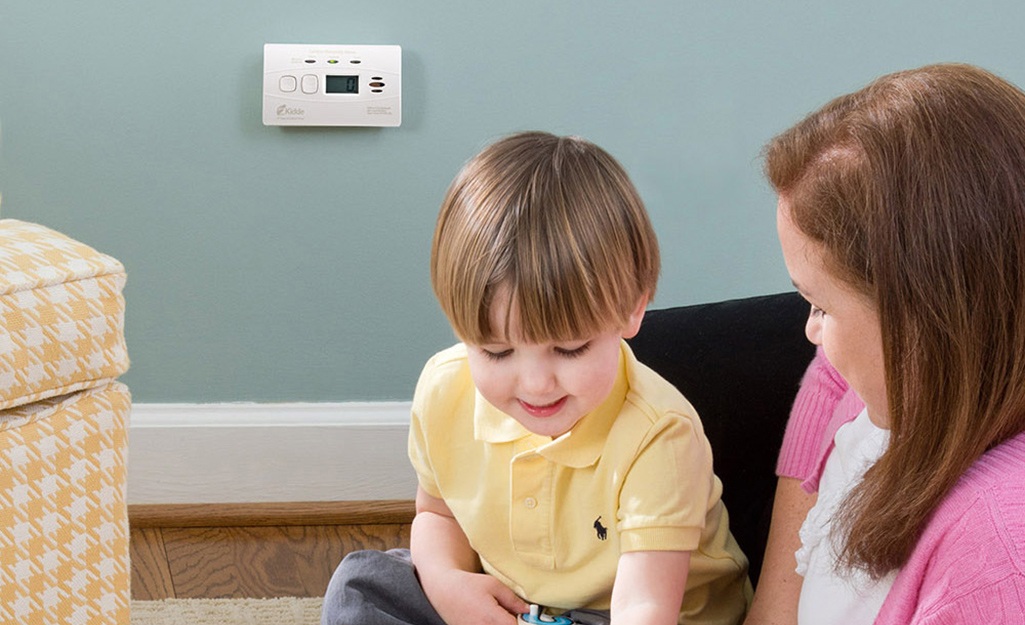
Even after a house fire is put out, you may still have to worry about carbon monoxide, so include carbon monoxide detectors in your fire safety equipment.
What is Carbon Monoxide (CO)?
Carbon monoxide, abbreviated CO, is a colorless and odorless poisonous gas that comes from an appliance malfunction, improper ventilation or burning fossil fuels like oil, gas and coal. A furnace crack, dryer vent clog or a blocked chimney can all produce CO.
Inhaling too much CO will give you flu-like symptoms, such as headaches, fatigue, nausea, dizzy spells, confusion and irritability. Because these symptoms are similar to influenza, they are sometimes misdiagnosed. As more time passes, the symptoms can worsen to include vomiting, loss of consciousness, brain damage and even death.
Dangerous Carbon Monoxide Levels
Carbon monoxide alarms work by measuring the amount of CO over time. The following CO limits were created by Underwriters Laboratory, a trusted independent safety certification company. Be sure your CO alarms follow the UL-approved limit guidelines:
- 30-ppm (parts per million) for 30-days
- 150-ppm for 10-50-minutes
- 70-ppm for 60-240-minutes
- 400-ppm for 4-15-minutes
If any of these levels are exceeded, the CO monitor’s alarm will alert you of the threat. If your CO alarm is ever activated, leave your home immediately and call 911.
Technology
Some types of carbon monoxide monitors are battery-operated, while others can be conveniently plugged into an available outlet. Battery-operated carbon monoxide alarms typically have sealed lithium ion batteries that last for up to 10-years. After this 10-year period, the CO alarm should be replaced.
Plug-in carbon monoxide alarms plug into the average electrical outlet, allowing you to relocate them as needed or take them with you when you move. No installation is required, and plug-in CO alarms usually have a back-up battery in case of power outages or outlet failure.
You can also choose a combination alarm, which acts as both a smoke detector and CO monitor. This 2-in-1 option can be hardwired into your home, allowing you to rest easy knowing that your family is protected against two dangerous threats.
Placement
Place a CO alarm outside of every bedroom and on every level of your home, including the basement. To avoid inaccurate readings and false alarms, install CO alarms at least 15-feet from fireplaces, stoves and furnaces, or according to the manufacturer's guidelines.
Fireplace & Smoking Safety
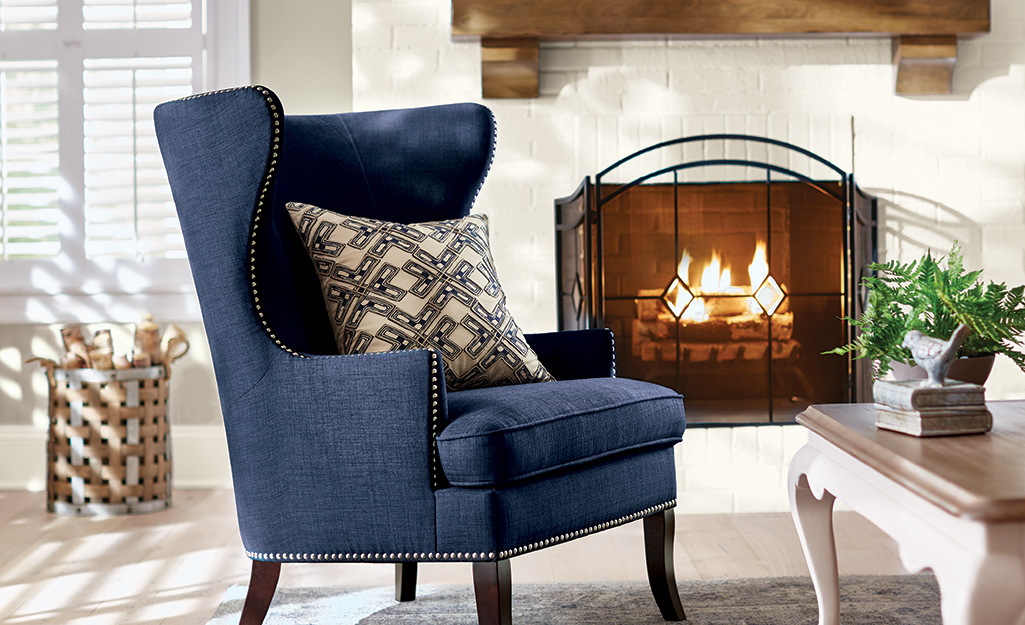
If your home has a wood-burning or gas-burning fireplace, make sure you take the proper precautions and follow these fire safety tips:
- Have your chimney inspected and, if necessary, swept or cleaned at least once a year, especially if you use your fireplace regularly.
- Keep fireplace screens securely in place every time you light a fire. The screen is necessary to keep ash or spewing log fragments from igniting carpet, area rugs or other fabric nearby.
- If any household members or guests choose to smoke, consider making a rule that smoking should only take place outside of the home. Should you choose to smoke indoors, however, you should never smoke in bed, as many fires start when a person falls asleep and the lit cigarette ignites bedding material.
Keep your home fire safety plans up to date with all the fire safety equipment mentioned in this guide. To stay prepared in case of a house fire, your home should have ample smoke alarms and carbon monoxide alarms installed, as well as at least one fire extinguisher stored in a convenient location. To shop home fire safety equipment, check out The Home Depot Mobile App. You can also have equipment delivered straight to your door with The Home Depot free delivery on over one million online items.


